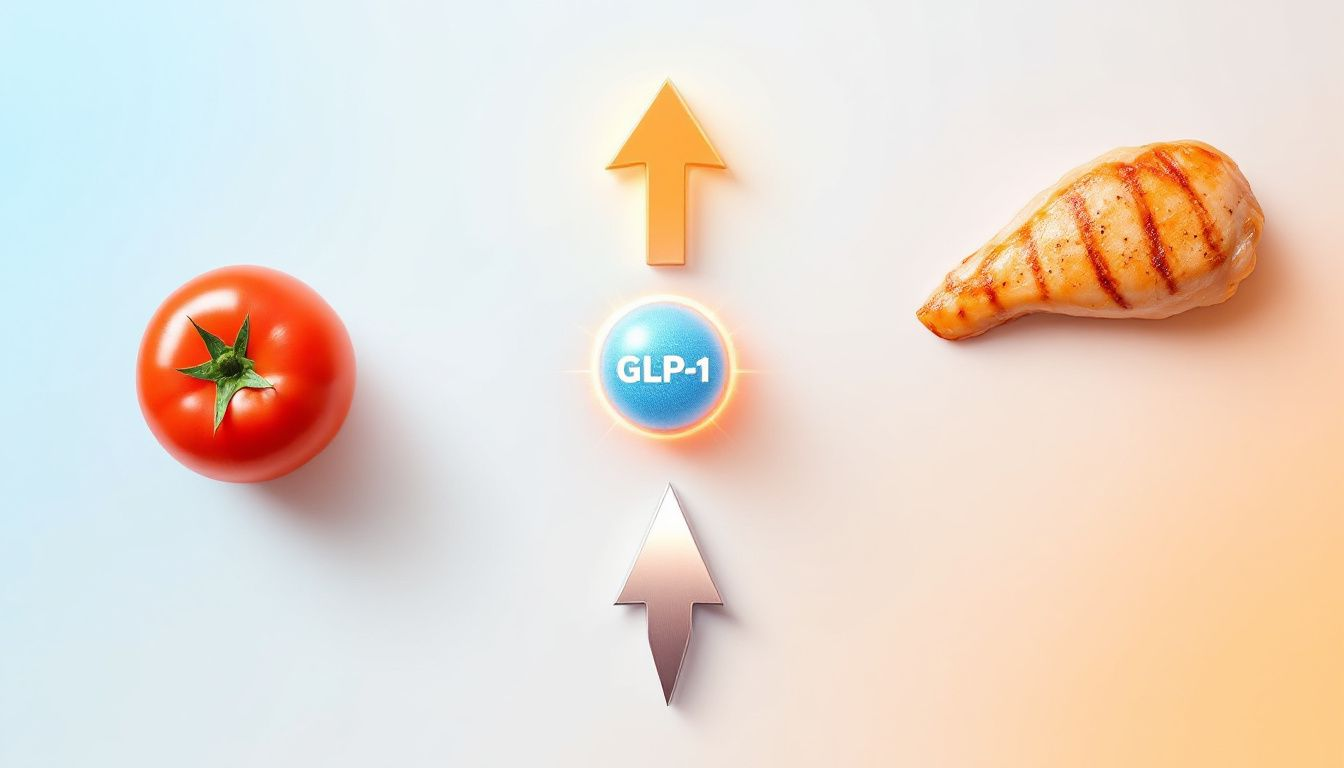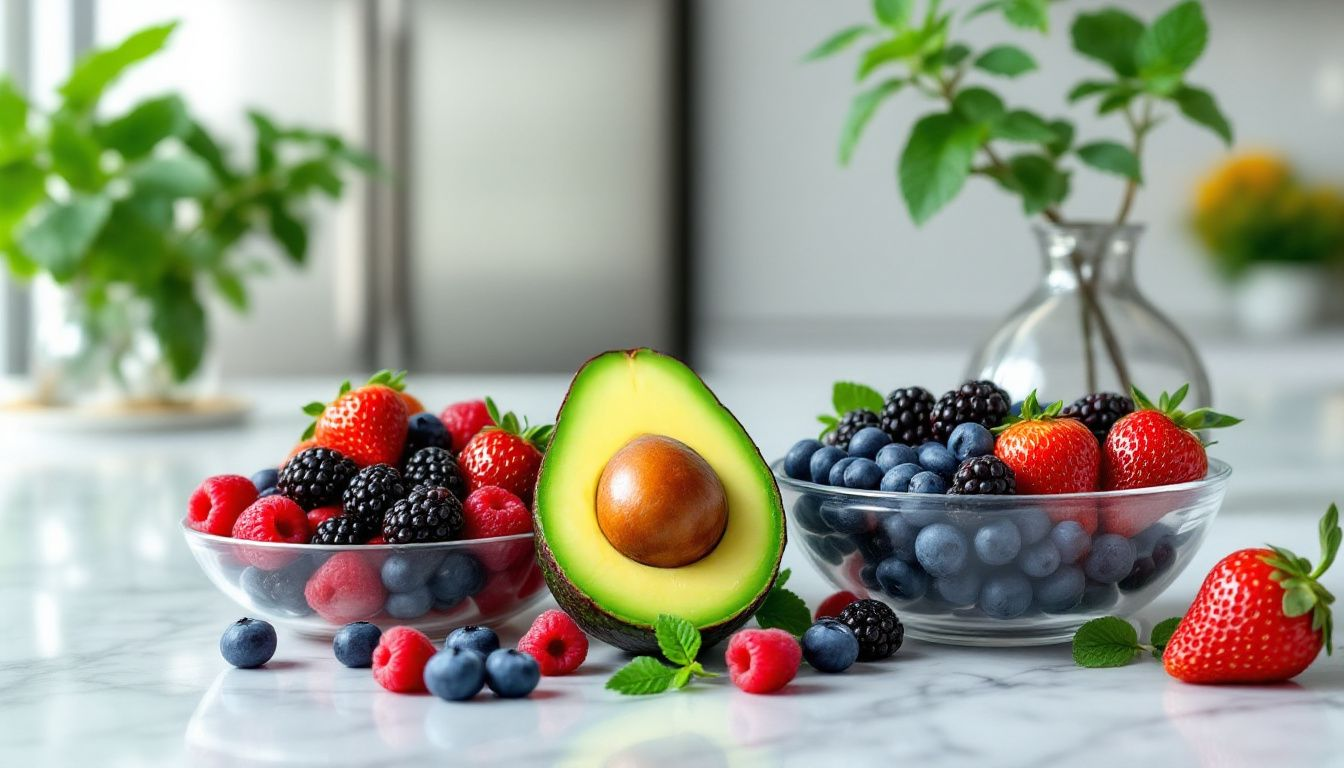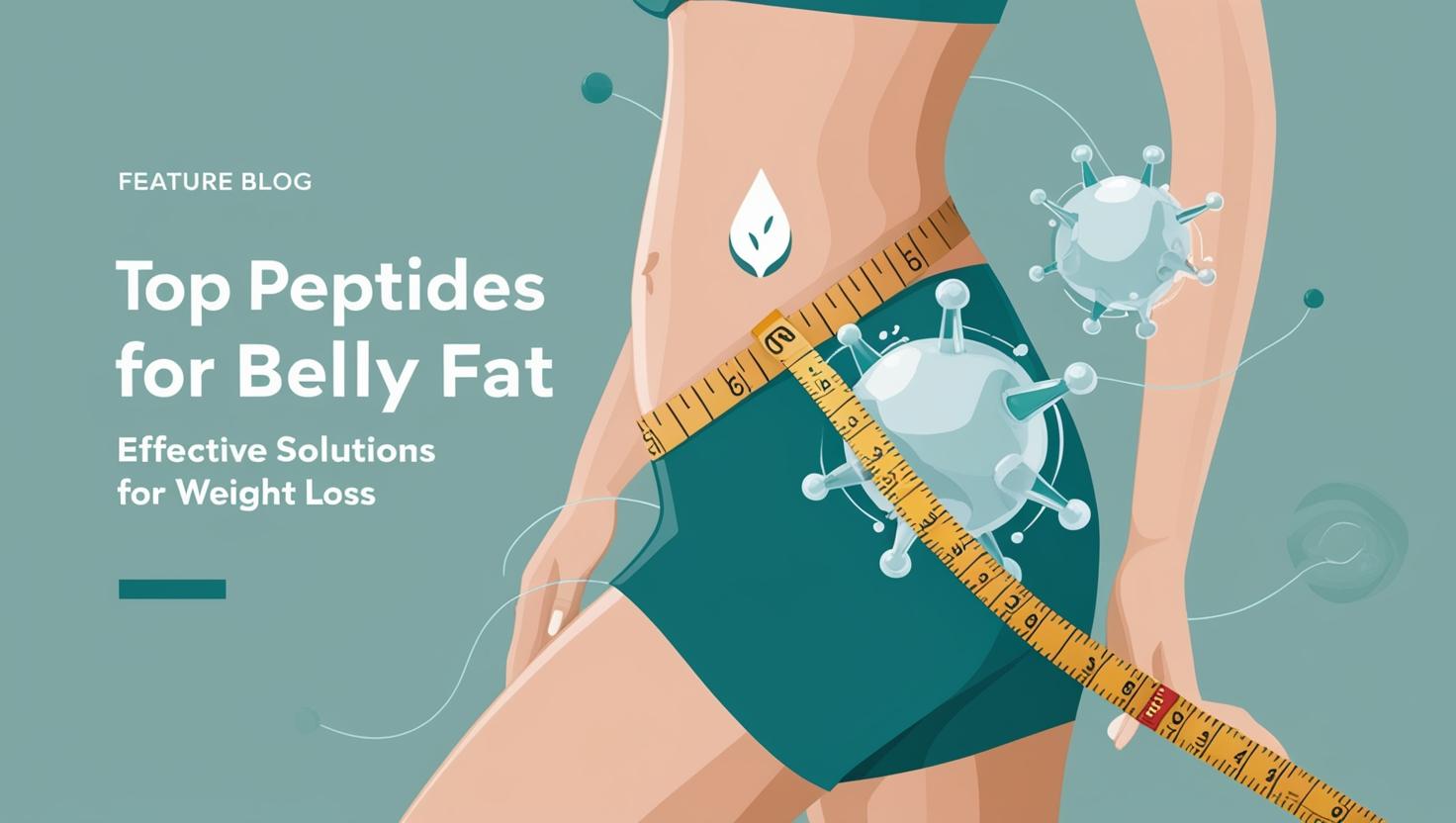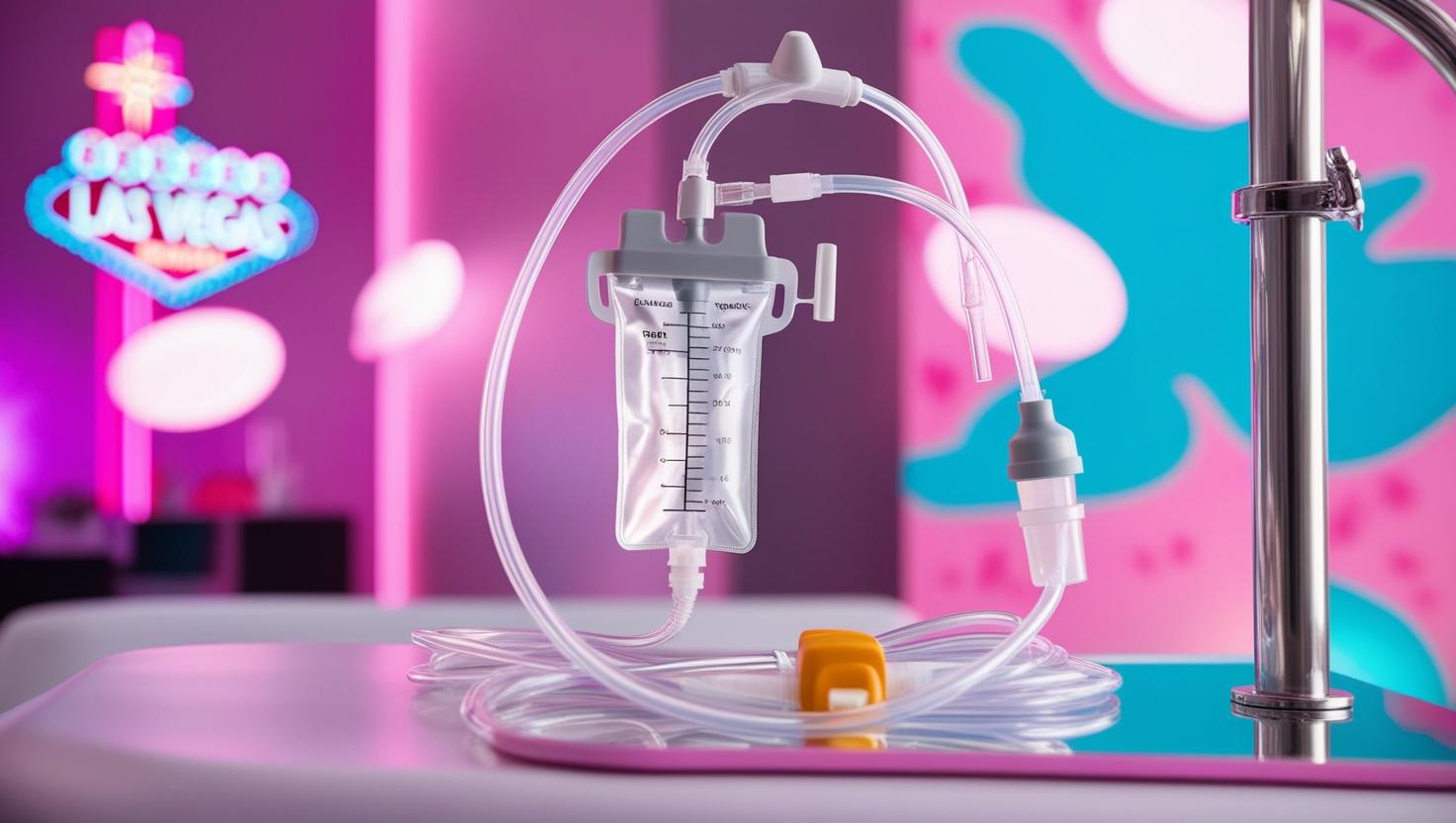The GLP-1 diet is designed to help you lose weight by focusing on foods that work in harmony with GLP-1 medications. In this article, we’ll discuss which foods to eat and which to avoid, how GLP-1 helps with weight loss, and how to manage your diet for maximum effectiveness.
Key Takeaways
- GLP-1 receptor agonists promote weight loss by controlling appetite and regulating blood sugar, making them effective for managing obesity.
- To maximize GLP-1 benefits, avoid high-sugar, starchy foods, and limit unhealthy fats and alcohol while focusing on lean proteins, high-fiber foods, and healthy fats.
- Consult with healthcare providers for personalized GLP-1 treatment plans and regular health assessments to ensure safety and effectiveness in your weight loss journey.
Welcome to our comprehensive guide on the GLP-1 diet, a transformative approach to weight loss that harmonizes with GLP-1 medications.
Whether you’re seeking to shed pounds, manage diabetes, or simply adopt a healthier lifestyle, understanding the role of GLP-1 in your diet can be a game-changer.
In this article, we’ll explore the best foods to eat and avoid, the science behind GLP-1’s effectiveness, and how to tailor your dietary choices for optimal results. Let’s embark on this journey to better health and well-being together!
Understanding GLP-1 and Its Role in Weight Loss

GLP-1 receptor agonists were initially developed to help manage type 2 diabetes, but they have since proven to be highly effective as weight loss drugs. Clinical trials have shown that individuals using GLP-1 treatments experience significantly greater weight loss compared to those on a placebo. But how exactly do GLP-1 agonists help you lose weight?
The magic lies in the mechanisms of GLP-1 receptor agonists. These medications delay gastric emptying and influence appetite-regulating neurons, helping you feel full sooner and for longer periods. This means you’ll naturally eat less without feeling deprived. Furthermore, GLP-1 agonists affect insulin secretion, which helps regulate blood sugar levels and supports weight loss.
Promoting feelings of fullness and reducing cravings, GLP-1 medications help decrease your overall food intake. Controlling your hunger and thinking less about food – that’s the power of GLP-1. Additionally, these medications alter the brain’s food reward pathways, making it easier to resist those tempting treats.
One of the most remarkable aspects of GLP-1 receptor agonists is their ability to help you achieve a weight reduction of just 5-15%, which can significantly enhance the management of health complications related to obesity. Therefore, GLP-1 agonists might be the solution for those aiming to lose weight and improve overall health.
Foods to Avoid on a GLP-1 Diet
While GLP-1 agonists are effective for weight loss, making the right dietary choices is key to maximizing their benefits. Certain foods can hinder the effectiveness of GLP-1 medications, so knowing which ones to avoid is crucial.
First and foremost, steer clear of foods high in sugar and unhealthy fats. These processed foods can spike your blood sugar levels and counteract the benefits of GLP-1 agonists. Sugary beverages like sodas and sugary juices are also a no-go, as they can lead to rapid spikes in blood sugar and make it harder to lower blood sugar.
Starchy vegetables like potatoes, corn, and peas should be consumed in limited quantities. While they may seem healthy, their high starch content can negatively impact your blood sugar levels. Additionally, be cautious with alcohol consumption, as it can negatively affect liver function when combined with GLP-1 medications.
Spicy and acidic foods may exacerbate any side effects associated with GLP-1 usage, so it’s best to avoid them if you experience any discomfort. Making mindful dietary choices and avoiding these foods enhances the effectiveness of your GLP-1 diet, helping you achieve your weight loss goals more efficiently.
Best Foods for a GLP-1 Diet

A GLP-1-friendly diet emphasizes whole, nutrient-rich foods that help maintain stable blood sugar levels. Focusing on high-fiber foods, lean proteins, and healthy fats supports your weight loss journey and improves your overall health.
Let’s explore the best foods to include in your GLP-1 diet.
Lean Proteins
Lean proteins are a cornerstone of any healthy diet, and they play an especially vital role in a GLP-1 diet. Sources like chicken, fish, and plant-based options not only help you feel fuller for longer but also aid in maintaining muscle mass.
Enjoying a delicious grilled chicken breast or a perfectly cooked piece of fish – these lean protein sources keep you satisfied without the extra calories and fats found in processed meat. Incorporating lean proteins into your meals enhances feelings of fullness and helps regulate your appetite more effectively.
Whether you’re a fan of beans, tofu, or lean cuts of meat, making these food choices can significantly impact your weight loss journey. Lean proteins provide the amino acids your body needs to build muscle and stay strong, all while helping you lose weight.
High Fiber Foods
High-fiber foods are essential for managing weight and controlling blood sugar levels effectively. Foods like whole grains, vegetables, and a variety of fruits not only support digestive health but also help regulate blood sugar levels.
Consider swapping white bread for whole grains like brown rice or quinoa. These high-fiber options slow digestion, promoting a gradual release of glucose and supporting better blood sugar control. Incorporating high-fiber foods into your meals can help you feel fuller for longer, reducing overall food intake and aiding in weight management.
High-fiber foods also play a crucial role in maintaining a healthy gastrointestinal tract. They help move food through your system more efficiently, reducing the risk of constipation and other digestive issues. Prioritizing high-fiber foods in your diet enhances your overall health and well-being.
From crunchy vegetables to fiber-rich fruits, there are plenty of delicious and nutritious high-fiber options to choose from. Making these smart dietary changes supports your GLP-1 diet and helps you achieve your weight loss goals more effectively.
Healthy Fats
Healthy fats are an important component of a balanced diet, providing essential nutrients that your body needs to function properly.
Sources of healthy fats include:
- Avocados
- Nuts
- Seeds
- Olive oil
Adding healthy fats to your diet can help reduce bad cholesterol levels and promote heart health, which is essential for preventing cardiovascular disease. Imagine drizzling some olive oil over a fresh salad or enjoying a handful of almonds as a snack – these small changes can make a big difference in your overall health.
Fatty fish like salmon and mackerel are also excellent sources of healthy fats. These foods provide omega-3 fatty acids, which are beneficial for heart health and can help reduce inflammation. Incorporating these foods into your diet supports your weight loss journey and helps maintain a healthy heart.
Healthy fats also play a role in the absorption of fat-soluble vitamins like A, D, E, and K. Including these fats in your diet ensures your body gets the nutrients it needs to stay healthy and strong. Making these smart food choices enhances the effectiveness of your GLP-1 diet and helps you achieve your weight loss goals.
Managing Blood Sugar Levels with a GLP-1 Diet
Managing blood sugar levels is crucial for those on a GLP-1 diet. Meal timing and composition play a significant role in enhancing the effectiveness of GLP-1 medications. Adopting regular meal patterns and making mindful food choices helps manage blood sugar levels and supports your weight loss journey.
Moderating carbohydrate intake is essential. Choose whole, minimally processed sources of carbohydrates and manage portion sizes to avoid rapid spikes in blood sugar. Whole grains and high-fiber vegetables slow digestion, promoting a gradual release of glucose and stimulating GLP-1 release.
Incorporating foods rich in protein, fiber, and healthy fats can enhance the release of GLP-1, aiding in appetite control and blood sugar regulation. A balanced meal with lean proteins, high-fiber vegetables, and healthy fats helps you feel full and satisfied while keeping your blood sugar levels in check.
Eggs, for instance, are a notable source of protein that can promote GLP-1 secretion, leading to lower post-meal blood sugar levels. Making these smart dietary changes maximizes the benefits of your GLP-1 diet and helps achieve better blood sugar management.
Hydration and Beverage Choices
Proper hydration is essential for overall health and assists in effectively managing blood sugar levels. Aim to drink at least 64 ounces of water daily to stay hydrated and support your weight loss journey.
If plain water isn’t your favorite, try infusing it with fresh fruits or herbs to enhance the flavor and encourage increased fluid intake. Herbal teas without caffeine are also a great option to contribute positively to your daily water consumption.
It’s important to limit sugary drinks and caffeinated beverages, as they can negatively impact your blood sugar levels and overall health. Alcoholic drinks should also be consumed in moderation. Making smart beverage choices supports your GLP-1 diet and helps achieve your weight loss goals more effectively.
Preventing Muscle Loss on a GLP-1 Diet

Preventing muscle loss while on a GLP-1 diet is crucial for maintaining overall health and strength. To retain muscle, it’s essential to consume sufficient protein at each meal, aiming for 1-2 grams per kilogram of body weight daily. The recommended daily protein intake to prevent muscle loss is at least 60 grams. Incorporating lean proteins like chicken, fish, and plant-based sources can help you meet this requirement while supporting your weight loss journey.
Strength training exercises at least twice a week are also vital. These exercises signal your body to preserve muscle mass during losing weight efforts. Combining a high-protein diet with regular strength training helps prevent muscle loss and achieve your weight loss goals more effectively.
Importance of Consulting Healthcare Providers
Consulting healthcare providers tailors GLP-1 treatment to your specific health conditions and ensures safe usage. Thorough discussions with your healthcare provider help evaluate the risks and benefits of GLP-1 medications and make informed decisions.
Regular health assessments, including blood tests, are crucial for monitoring your progress and ensuring the safe metabolism of GLP-1 medications. These assessments help identify potential issues early on and allow for adjustments to your treatment plan as needed.
Initial consultations at Body Balance Medical involve reviewing your medical history and weight loss goals to create a suitable treatment strategy. The practice follows up with patients monthly to assess their progress and refine their weight loss goals, ensuring ongoing support.
How Body Balance Medical Can Help
Body Balance Medical specializes in medical weight loss services to help individuals improve their health and wellness. Located in Las Vegas, Nevada, Body Balance Medical offers personalized plans tailored to each patient’s needs.
Patients at Body Balance Medical typically lose between 15% to 20% of their initial body weight when using semaglutide. These results demonstrate the effectiveness of the personalized weight loss plans offered by the clinic.
For a supportive and effective weight loss program, Body Balance Medical can help you achieve your goals. Contact them today to start your journey towards a healthier, happier you.
Summary
In summary, the GLP-1 diet offers a promising approach to weight loss by leveraging the power of GLP-1 agonists. By making smart dietary choices, including lean proteins, high-fiber foods, and healthy fats, you can maximize the benefits of your GLP-1 treatment and achieve your weight loss goals.
Remember to consult your healthcare provider to tailor your GLP-1 treatment to your specific needs and ensure safe usage. With the right support and dedication, you can transform your diet and your life. Embrace the journey towards a healthier, more vibrant you!
Frequently Asked Questions
What are GLP-1 agonists and how do they work?
GLP-1 agonists are powerful medications that not only help manage type 2 diabetes but also promote weight loss. By delaying gastric emptying and influencing appetite, they support better blood sugar regulation and overall health.
What foods should I avoid on a GLP-1 diet?
To thrive on a GLP-1 diet, steer clear of sugary and processed foods, unhealthy fats, and starchy vegetables like potatoes and corn. Making these choices will empower your journey to better health!
What are the best foods to include in a GLP-1 diet?
To thrive on a GLP-1 diet, prioritize whole, nutrient-dense foods like lean proteins, high-fiber options, and healthy fats. Embrace this wholesome approach for better health and energy!
How can I manage blood sugar levels with a GLP-1 diet?
To effectively manage blood sugar levels with a GLP-1 diet, establish regular meal patterns, focus on whole, minimally processed carbohydrates, and include protein, fiber, and healthy fats. This balanced approach will enhance GLP-1 release, supporting better blood sugar control.
Why is it important to consult healthcare providers when on a GLP-1 diet?
It’s crucial to consult healthcare providers on a GLP-1 diet to tailor the treatment to your unique health needs and monitor your progress safely. This partnership empowers your journey toward better health!







